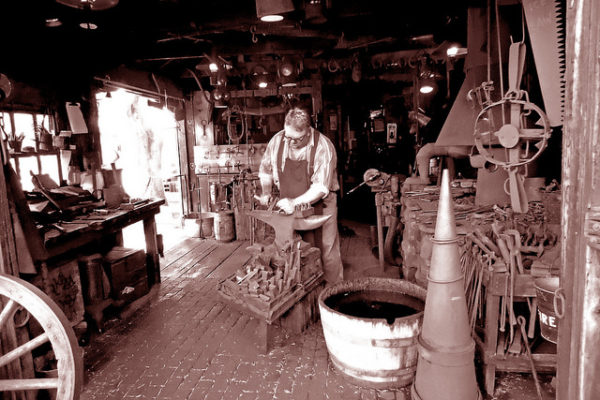Taskonomy.
It’s a real word, and it first belonged to a trade.
A blacksmith arranges tools in a logical order. What implement does he need at this step in the process? The way he or she arranges these items makes the craft easier, more streamlined. Everything in just. the. right. place.
Mark Greenfield brings this term, “taskonomy” to higher education, replacing the content strategy word “taxonomy.”
In his HighEdWeb 2017 presentation, he shared how we should rethink our approach to content, basing our big decisions on tasks are audience needs to complete at the various stages in an enrollment cycle or during the cyclical nature of an academic year.
To start off his presentation, he shared some results of an E-Expectations survey in which high school students reported what matters to them most when going to a college website. Is appearance most important, or is it information? The results showed that only 18 percent of students said look and feel was more important; 82 percent wanted to find answers.
‘Think about tasks rather than information,” said Greenfield, adding, “Information is only useful in the context of a task.”
He reminds us of the sage advice we’ve been getting at web conferences for years (which still seems to be lost on many .edus!) – to not base a website off internal structure. Instead, he suggests transforming goals into tasks, and he outlined a process that starts with developing a list of every task someone may need to complete on the website that you could think of, which will likely result in a sprawling document of upwards of 1,500 tasks. Through stakeholder interviews, both “customer” and internal people, that list then should be narrowed to the top six to 10 tasks. In higher education, this means the top tasks for each major area, for example for admissions, alumni, etc.
He referenced author and expert Gerry McGovern, whose work focuses on tasks and, more specifically, TOP tasks. McGovern brings up what are called “ego tasks” – or the items your boss or boss’ boss think are important, but actually would rank really low in analytics or user surveys. So, watch out for those as your research comes together.
Greenfield suggests another way to test tasks on the website is to have a group of a dozen-ish people complete tasks, and look at if they complete them, if they can complete them within a set timeframe (usually in one to two minutes), if they failed, etc. He calls these TPI – task performance indicators. This data can be used to embark on a redesign as well as tweak over time.
A Brick & Mortar Analogy
He related this process of focusing on tasks to what his institution did in the early 2000s; like other schools have done in recent years, University of Buffalo created a one-stop shop for student services, which, in short, was a logically arranged set of services available in one spot with cross-trained employees. No longer did a student have to go to one place to do one task, and walk across campus for another. Makes sense in real life, so why not on the web?
“Taskonmoy” boils down to this question, according to Greenfield: How easily do you want people to be able to accomplish something on your website?
IMAGE CREDIT: Flickr Creative Commons/Mr. Gray

